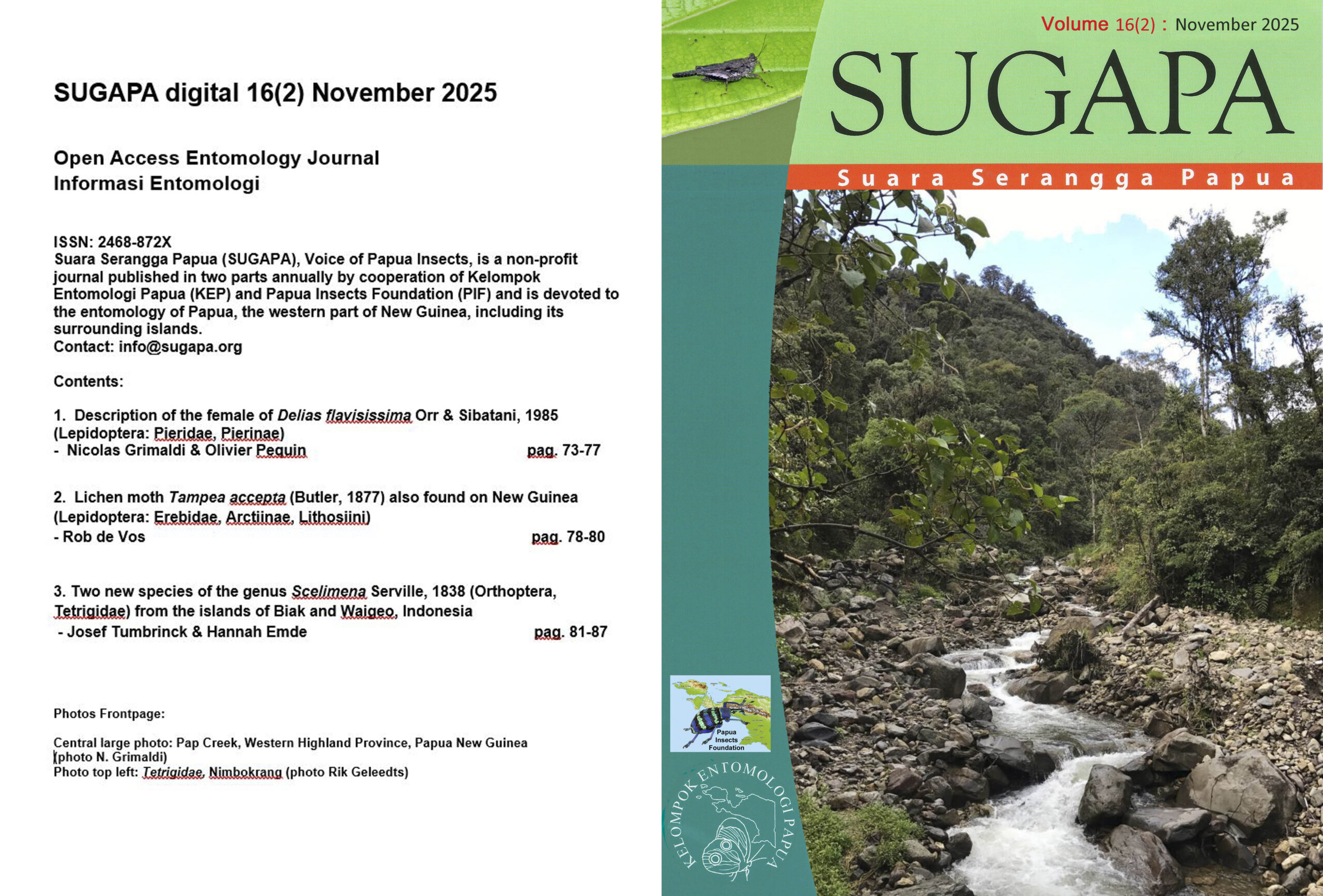3.Edy Rosariyanto
Pre-study of the phenomenon butterfly
Preparing research at butterflies.
People who like to do fieldwork need to prepare themselves. A good preparation is necessary because it may be the difference between success and failure. Some aspects during the preparation may be a part of the results that could be expected.
Specification of the target. Specify clearly what will be the target of your research.
Specification of the research location. It is necessary to find information on the location where you want to do your research. Find information about the geographical name, geographical location, the means to reach the area and what the expenses will be, etc.
Collect existing data of the area. It is important to have scientific data of the area that already is available. Not only of species of butterflies but also on anthropology, development, forestry, etc.
Preparation of food and drinks.It is important to prepare on the existence of food and drinks. What do you have to bring with you and what is available in the area. Some vegetables and fruits can be obtained from locals, so this means less weight in your luggage.
Preparation of informative letters. It may be important to have informative letters for “Kepala Dessa” or other representatives of authorities, to inform those people about the purpose of your visit and research. In such a letter the names of the research team should be mentioned and the duration of the visit. This letter should be given to the “Kepala Dessa” or others and should be made by UNCEN or other institutions. .
Preparation of medicines.Not every researcher has a good health. Some might have special diseases, like gout or allergies. Diseases which makes it necessary to have special medicines and which may not be available in the research area. A good preparation is needed to have these medicines available when necessary.
Preparations of tools and equipment.Tools and equipment that you need will be prepared before you start, like a net, envelopes, forceps, GPS, camera, etc. If you want to collect at night you need a generator, lamp, cable, etc. and also killing bottles. ..
Your own preparation. For doing fieldwork it is important to be fit. Pay attention to your private luggage, like clothing, a sleeping bag, soap, comb, money, etc. Your private belongings should be carried by yourself without the help of other people. If the total luggage is too heavy the whole team should be responsible for it. It is important to plan what is needed to bring with you.
Motivation.It is necessary that the survey has a scientific purpose. It is not appreciated when members of the team change their plan during the field survey. If, for instance, the purpose is butterflies, please do not change this to beetles, flies, etc. during the research. However, if there is a necessity for changing the subject it should be discussed with the research team.
Pray. Where we are weak we trust on God. We hope we will be safe without any accidents. Let’s hope for the results we are working for.
Finally. Each researcher needs different preparations, depending on the course you take and the area you go to. A good preparation is the beginning of your success in your research. (Based on experience with some surveys that already took place)
Download PDF:

 Open Access Entomology Journal
Open Access Entomology Journal


